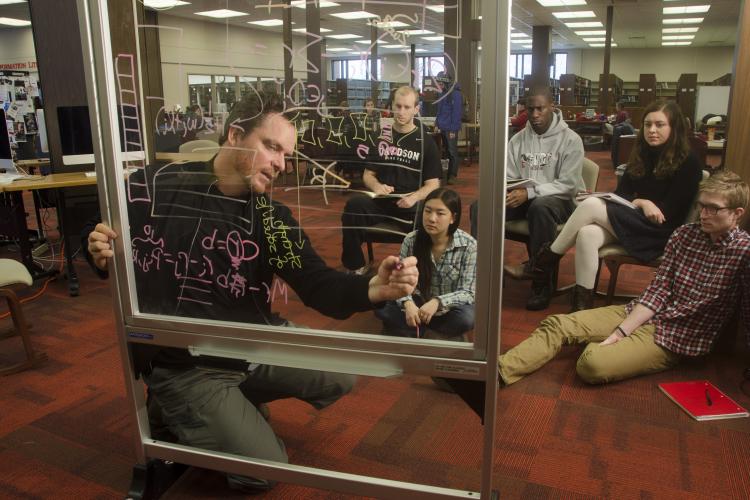Tim Chartier is an applied mathematician with a focus in computer science, a former MAA vice president, and a professor of Mathematics and Computer Science at Davidson College, who frequently works in data analytics with a specialty in sports analytics. He has worked with the NBA, ESPN's Sport Science TV series, NASCAR teams, and fantasy sports sites. He also directs and works with a team of about 70 student researchers to provide analytics to Davidson College sports teams.
What was your path into sports analytics?
My first project in sports analytics was with my main collaborator Amy Langville from the College of Charleston. Much of our work grew out of interest in search engines where ranking methods play a pivotal role in the ordering of the web pages you see after you submit your query. The issue with a ranking method is that it will rank, but not necessarily with a meaningful ordering. We needed to test the methods. It occurred to us about a month before March Madness that we could adapt the methods to produce brackets for the tournament. So, we did. They all did well with one beating 97% of over 4 million brackets submitted to ESPN. This was 2009.
When did you start teaching sports analytics?
By 2010, I began teaching math-generated March Madness brackets in class. One of my students produced a bracket that beat 99.9% of over 5 million brackets submitted to ESPN that year. This year, I had over 400 youth come to campus to learn how to use math in March Madness. My son, who isn’t a sports fan, used the methods, thinking only about the mathematics and created a bracket that beat over 98% of over 17 million brackets submitted to ESPN!
What do you like best about your job?
I get to create memories with students that last a lifetime. For instance, our team developed a model for the NFL draft for the Carolina Panthers. One of my student researchers came to my office to present the model over the phone to a sports analyst for the Charlotte Hornets. He carried the meeting and was the expert. My main role was taking pictures so he could have them and share them with his family and friends. At the end of the meeting, the student stared at the phone and then slowly to me. He said, “I’m going to remember this moment for the rest of my life.” I smiled and responded, “Me, too. I’m so proud of you.” I feel extremely fortunate to have such experiences and am grateful to be at Davidson College that supports me in such a journey.
What would your advice be for anyone trying to break into sports analytics?
First, keep in mind that there are several avenues in sports analytics. Such jobs may involve looking at data to improve play by the team or a player or to reduce the risk of injury. You may be part of the marketing group and study how to further engage fans in and out of the stadium or arena. You may be a sports analyst sitting at a media table supplying a numeric look at the game to broadcasters. You may be part of a newsroom developing analytics to support reporters. Various companies including Nike and Under Armour use analytics in their work. So, do other companies that may have biometric devices or work in agency or fantasy sports.
Second, if you want to work in sports analytics, be willing to work in analytics. If you don’t get a job in sports analytics immediately, get a job you can enjoy in analytics. Many sports analysts jump from jobs in the industry over to sports. Think of it as training!
Click here for more information about Cats Stats.
Photo Credit: Davidson College

